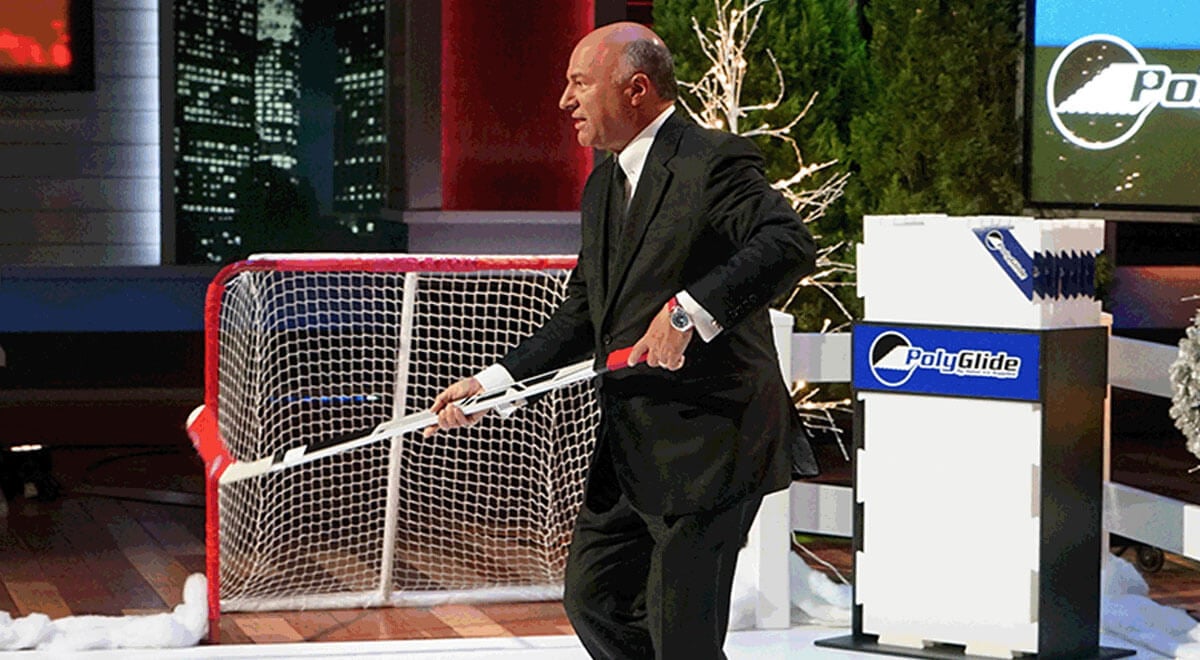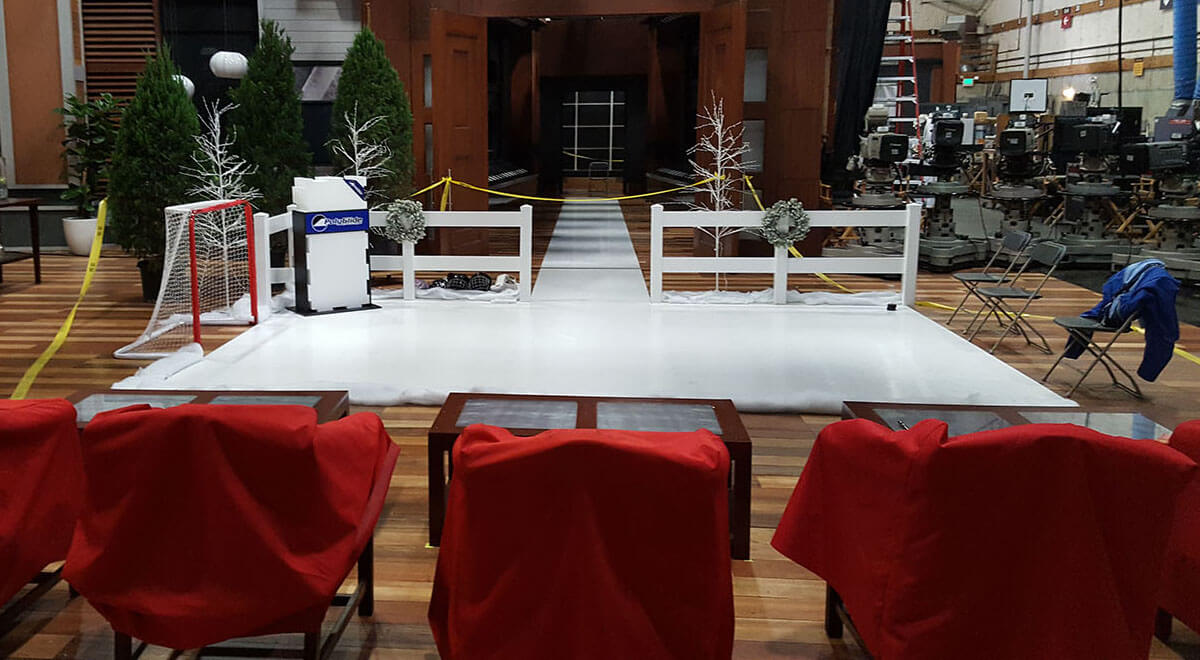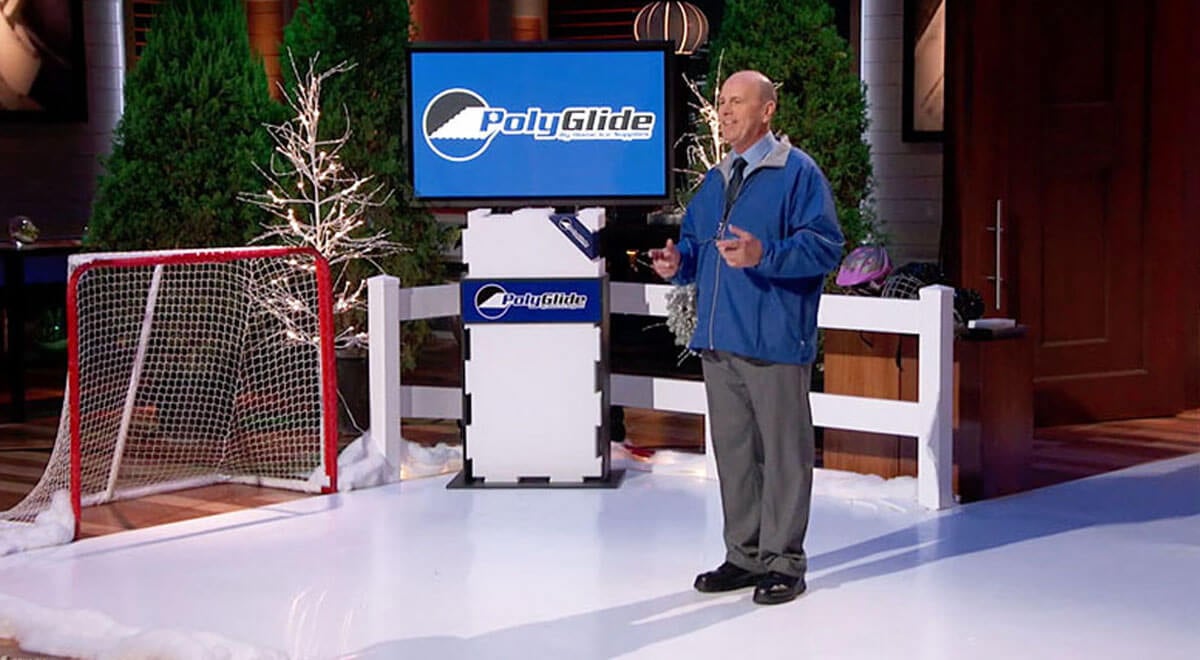10 Best Hockey Skates under $200 (2025)
Hockey is one of the few sports that maximizes the capabilities of the human body.
It requires strength, speed, dexterity, power, and intelligence.
To achieve that, you need the best equipment possible.
Undoubtedly, hockey skates is the most important tool for a hockey player.
Skates must be built for comfort and high performance, so finding the best hockey skates is crucial.
Our Top Picks
Best Beginner Hockey Skates
Tour TR-750 Hockey Skate
Best Beginner Hockey Skates
Botas Draft 281 Hockey Skates
At the same time, hockey skates are also the most expensive piece of equipment you will buy.
The skates your favorite NHL forward wears, like the Bauer Vapor 2x Pro, can retail at $1000.
Customizable skates can cost much more.
If you’re a beginner player, or your kids are moving up in rank, this could be way outside your budget.
A common question asked by our synthetic ice customers is, “ What skates should we buy?”
That’s why we put together this short list of the 10 best hockey skates under $200.
At $200 - and just below (or above) - you can find a low-to-mid-tier skate that can provide an excellent fit, comfort, and protection.
These are also beginner skates, perfect for recreational players or those just getting into hockey.
When it’s time to upgrade, you (or your child) will have a feel for the fit and performance.
So it will be easier to transition to a pro-level skate.
When it comes to hockey skates, there are a few brands that you can trust for their experience and quality:
- Bauer
- CCM
- Graf
- Botas
- True
Some of these brands start well beyond our $200 ceiling, so you won’t see them on this list (we’re looking at you, True).
However, that does not mean they aren’t exceptional skates.
Our mission is to keep coins in our pockets and excellent skates on our feet.
So, without further ado, consider one of these 10 hockey skates to help you crush it on the ice.
Here Are Our Picks For The 10 Best Hockey Skates Under $200
These skates are perfect for any ice surface (natural or synthetic) and are often available in all sizes.
Best Beginner Hockey Skate
Tour Tr-750 Hockey Skate

Starting off the list is the Tour TR-750
The Tour skates are relatively unknown but are growing in popularity.
The Tr-750 are entry-level skates that are available for kids and adults.
The boot has a unique synthetic material with a hard-toe cap for added protection.
The inner lining is soft yet durable, providing the necessary support for hours.
Key Features (Pros)
- Thick felt tongue to protect the upper foot
- Firm boot with a synthetic outsole that withstands moisture from the ice.
- Comfortable for recreational skating or casual use
Possible Drawbacks (Cons)
- Synthetic materials can break down faster than other brands.
- Stainless steel blades that require sharpening right out of the box. This could signify that the blades may not hold their edge over time.
- Sizing may be a challenge. The boot is for unisex adult sizes, but no other sizing chart information.
Overall, this is a cost-effective entry-level skate that is comfortable and durable.
Botas Draft 281 Hockey Skate
This Czech-made skate is recommended for intermediate to advanced skaters and is available for kids and adults.
The boot can feel more like a stitched shoe, with two pieces of synthetic plastic that create the boot with a hard plastic toe cap.
Key Features (Pros)
- Botas provides solid ankle support without being too stiff
- A sleek, ergonomic tongue that provides comfort and protection.
- The added padding around the ankles provides stability without stiffness.
- The boot has a sharp blade made of carbon steel.
Possible Drawbacks (Cons)
- Finding the right size can take time and effort. Make sure to follow sizing instructions.
- Boot material may be less durable compared to other brands.
What makes Botas so appealing is its price point.
At less than $150 for their skates, you receive a competent entry-level boot while saving your hard-earned money.
American Athletic Ice Force Hockey Skate
American Athletic is one of the best hockey skates at a competitive price.
The skate is great for indoor and outdoor use due to its strong, durable materials.
The light boot has a professional look but can still perform well.
Key Features (Pros)
- PVC boot which improves speed but still provides durability.
- A padded microfiber lining helps skaters with comfort while reducing moisture.
- Unlike most brands, this one provides sizing that’s more true to your shoe size.
Possible Drawbacks (Cons)
- Skaters with wider feet may struggle with comfort, even though the size guide attempts to correct that issue.
- Stainless steel blades may need repeated sharpening to hold their edge.
- The stiff boot can take some time to adjust when on the ice.
AA Ice Force is a highly-rated boot online for less than $80.
Of course, the materials aren’t mind-blowing, but you or your family will get fantastic use out of the skates with the proper care.
Jackson Ultima Softec Sport Recreational Hockey Skate
Founded by world-class skaters, the Jackson brand has been around since the 1960s.
The Softec hockey skate is one of their premier offerings, a patented design that focuses on warmth and comfort without losing durability.
These skates are great for recreational hockey, so you don’t feel restricted by a rugged, rigid boot.
Key Features (Pros)
- Excellent style and colors not seen in hockey skates.
- Waterproof sole to prevent moisture, increasing the lifespan of your skate
- Heat moldable technology designed to keep your feet warm on cold rinks.
Possible Drawbacks (Cons)
- Some skaters might prefer a stiffer boot. Reduced stability means the boot may take longer to break in.
- The softer material means reduced ankle support. However, there is a velcro strap for additional support.
Jackson provides the right mix of style and comfort.
The thick, warm material makes them ideal for outdoor skating and hockey.
Like most new boots, take some time to break them in and sharpen the blades before skating.
Botas Attack Men’s Hockey Skates

Another Botas makes this list. The Attack 181 is geared toward beginner and recreational skaters.
These lightweight skates have a hard quarter made of two parts, bringing additional stiffness to protect against pucks and stray sticks.
The plastic toe cap provides support to the front of the foot.
The runner and holder are standard, with the runner needing sharpening immediately to hold its edge.
Key Features (Pros)
- Side ventilation reduces moisture, allowing you to skate longer.
- A sleek design, with composite material to protect the foot.
Possible Drawbacks (Cons)
- The boot has comfortable inner padding but does not form to the foot like other models.
- Blades are only possible to change with help from a professional.
This skate is excellent for testing your skills before upgrading to advanced skates.
You’ll get sufficient speed and durability.
For those with wide feet, the shape may require the boot to be worn with loose lacings.
TronX Stryker Soft Boot Hockey Skate
TronX is known for its lacrosse and hockey accessories, but they’ve also ventured into skates with the Stryker hockey skates.
These boots look sleek and sturdy, but they’re soft boots for beginners or recreational skaters.
The soft shell also comes with a large tongue and padded lining, so you feel maximum comfort when you skate.
Key Features (Pros)
- Great entry-level skate at a competitive price.
- Hard-toe cap for added protection from pucks and sticks.
- Comes with a size guide to help customers find the best fit.
- Blade comes pre-sharpened
Possible Drawbacks (Cons)
- Stainless steel blade may not hold its edge for long. It may need repeated sharpening based on use.
- Soft boots often lack added ankle support most skaters enjoy.
This boot is new to the party. However, the design, fit, and low price point will make it a mainstay.
Winnwell Amp 300 Hockey Skates
Canadian-based Winnwell may be the best-kept secret when it comes to hockey equipment.
They provide everything from sticks, helmets, and nets and have recently included hockey skates in their offerings.
The Amp 300 has nylon and PU lining with molded toe cap designed for protection.
Key Features (Pros)
- The NXT CleanSport technology helps these skates resist mold and moisture, leaving them fresher for longer.
- The comfortable felt tongue provides added protection and stability.
Possible Drawbacks (Cons)
- Stainless steel runner must be sharpened before use, adding to the overall cost.
- Skate may not hold its edge with heavy use.
The Amp 300 is available in multiple sizes for seniors and juniors, with the most expensive pair coming in at less than $120 CA ( about $90US).
With a 100% money-back guarantee, you can try these out with confidence.
CCM Super Tacks 9350 Senior Skates
Along with Bauer, CCM is arguably the most well-known hockey skating brand.
Adults looking to restart hockey can consider the Super Tacks 9350 skates. CCM has the best hockey skates preferred by professional hockey players.
Even though this boot is less than $150, some of the high-end qualities apply to these tiers.
Key Features (Pros)
- The 3-D designed quarter focuses on being durable while light, making it one of the faster skates on the market.
- It provides extra stiffness, which is appealing to more advanced skaters.
- The thick ankle foams and large felt tongue focus on comfort and support.
Possible Drawbacks (Cons)
- The stainless steel runner is unchangeable, so you will spend time and money on sharpening rather than replacing the blade.
- This skate is best for recreational use only. The top of the boot can be uncomfortable in long sessions or excessive use.
These skates are available for any age and are usable right out of the box.
They also maintain a medium-volume fit, so almost any foot type can use it.
5th Element Stealth Recreational Hockey Skates
The 5th Element skates have been around for years and are popular among recreational hockey skaters. You won’t use these to get into a professional game, but they will do the job. They’re great for men and women and fit true to shoe size. This boot is a softer synthetic material, making it easier to break in than others.
Key Features (Pros)
- The moisture-resistant liner helps with comfort and speed.
- Toe, ankle, and heel supports for more durability
- Usable straight out of the box.
Possible Drawbacks (Cons)
- While it's true to shoe size, the skate does not account for different foot shapes and lengths. Some skaters may struggle with comfort over long skating sessions.
- Stainless steel edge may lose its edge faster depending on the skate’s manufacture timeframe.
This highly-rated skate brings style and function to recreational skaters. It’s also one of the cheapest on this list.
Erik Sports Men’s Canadian Hockey Skate

Last on the list is the Canadian R50 skate by Erik Sports.
This skate provides the design and functionality hockey players look for.
The R50 is ideal for beginner to intermediate skaters.
It combines multiple materials for the quarters, including PU and nylon, as well as other synthetic parts.
Key Features (Pros)
- Thick 8mm tongue made of felt material that protects the instep from pucks and sticks.
- Reinforced toe cap and heel for added stability and protection
- Thermoplastic helps keep the feet warm during outdoor skating.
Possible Drawbacks (Cons)
- Heavier skate can impact speed and agility
- Although there is a contoured toe bed, the boot may not cater to different widths.
- Targeted to men, no junior or women’s sizes available.
The #1 thing to consider when choosing a hockey skate
If someone told you that size does not matter, they have never worn an ill-fitting hockey skate before.
So your number one priority should not be price, but comfort.
If they don’t fit well, your feet hurt. ...A lot.
Then they swell and hurt even more.
Finding the right fit can be difficult.
While we all wear the same shoe sizes, our feet take on different shapes.
Hockey skates aim to cater to different feet as balancing on blades for several hours can be uncomfortable.
Each brand has different styles that cater to narrow, normal, or wide feet.
It is recommended that you visit a skate shop first, so you can try on your skate.
If you can’t there are still steps you can take to ensure you have the best skate possible.
Get your skate size
As a rule, skates run big.
Manufactures make skates 1-1.5 sizes larger than your regular pair of sneakers.
In other words, don’t buy the same size as your (or your child’s) shoe as the boot will be too big.
Large skates mean slower skating, falls, and an overall poor experience.
Use the size guides of Bauer, CCM, or your provider of choice to find the right size.
Consider the skate volume
Boot size is the easy part, as that will just determine the length of the skates.
The volume is the total space inside the boot, which is even more important.
Volume takes into consideration the skater’s foot width in relation to its length.
There are several handy videos online to help you trace your size and calculate your volume.
Based on the results, you can find a High, Medium, or Low Volume skate.
Most people fall in the Medium category.
Choose your width
Skates also have additional width measurements which further help performance.
These measurements vary by manufacturer.
For instance, you can get a High volume skate with a more tapered look or a Low volume skate with a wider fit.
Like volume, most skaters choose the Standard fit but you can always adjust as you move onto other skates.
Check your brand of choice for their width measurements.
Your skates should be snug, with your toe just touching the toe cap (with your socks on of course. Make sure to measure your feet with socks).
There should be an inch off space in the back, just enough to place your finger.
Make sure to check your warranty or return policy.
If it’s not feeling quite right, do not hesitate to replace it.
Skate measurements are fluid.
For instance, Bauer introduced the “1,2,3 Fit system” to simplify what can be a difficult process.
Should I buy hockey skates or recreational skates?
You may be tempted to spend much less on a recreational skate on the shelf at Walmart.
Some can look like hockey skates and are much cheaper.
Recreational skates are great for leisure skating a couple of times per month or just for the winter season.
Hockey skates provide more ankle support and protect the foot from the inevitable bangs and clashes from sticks, pucks, and opponents.
You can skate recreationally with your hockey skates but it’s not recommended you play hockey in your leisure skates.
It’s Time To Skate!
Finding the best hockey skates at a reasonable price can be a challenge.
Luckily, most of the best brands on the market have a tier that can provide excellent performance at a reasonable cost.
They should last at least one year with heavy use on both natural and synthetic ice.
The best ice skates don’t need to break the bank.
Focus on comfort and fit, then performance.

















 Can you learn how to ice skate without ice?
Can you learn how to ice skate without ice?
 How To Ice Skate Without Ice – Cross Training With Inline Skates
How To Ice Skate Without Ice – Cross Training With Inline Skates












